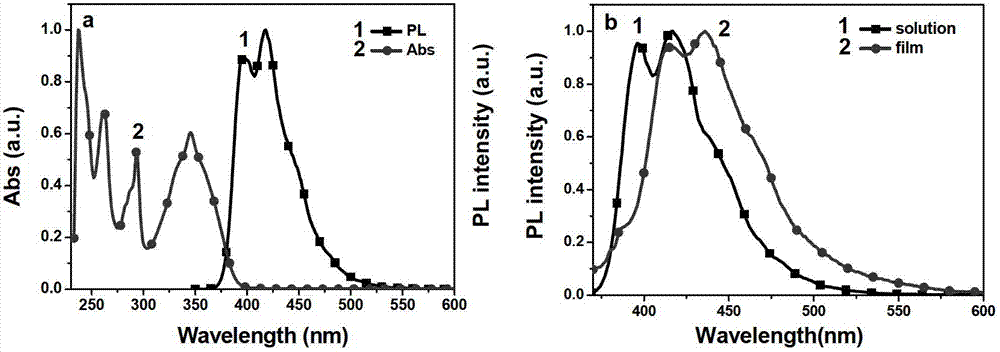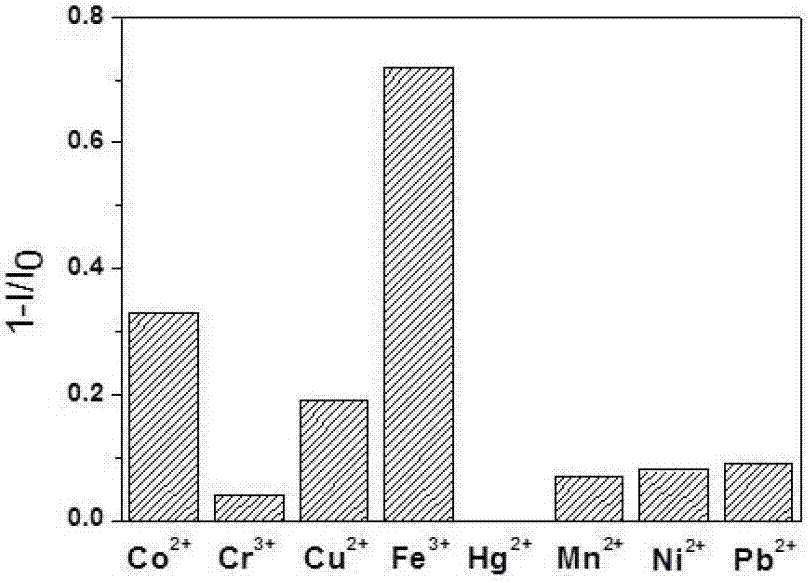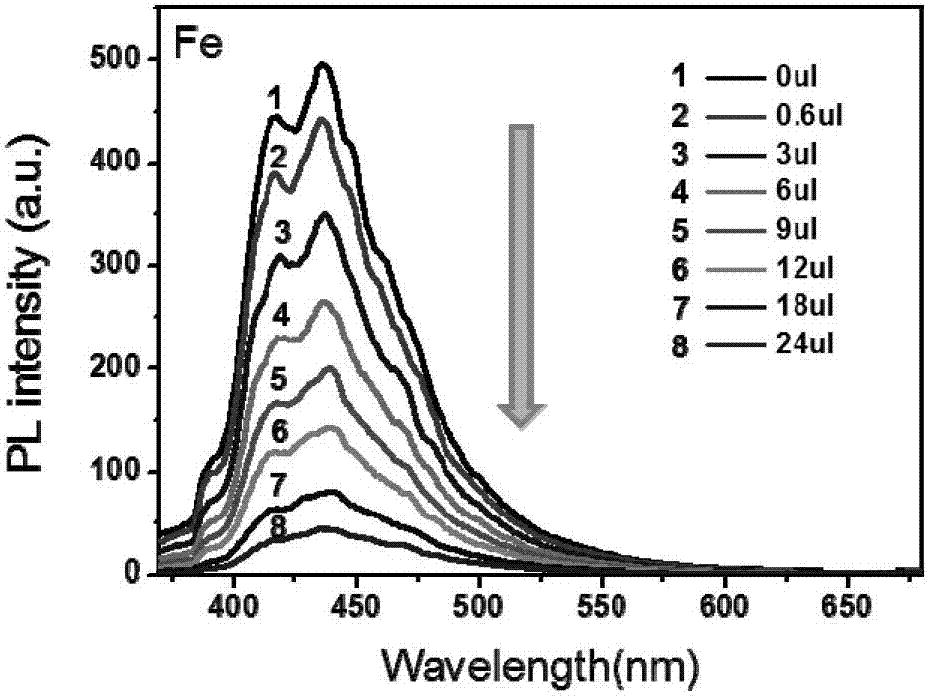Electropolymerizable fluorescent sensing material and application on fluorescent or electropolymerizable detection of metal ions
A fluorescent sensing and metal ion technology, applied in the field of fluorescent sensing materials, can solve the problems of hindering the rapid diffusion of metal ions to be measured, weakening the fluorescence quantum efficiency of thin films, and unstable film materials, and achieves controllable aggregate structure and guarantees The effect of permeability and stability, enhancing responsiveness
- Summary
- Abstract
- Description
- Claims
- Application Information
AI Technical Summary
Problems solved by technology
Method used
Image
Examples
Embodiment 1
[0037] Example 1: Electropolymerizable compound M1 with 2,2'-bipyridine as the metal ion recognition center
[0038] We only take the synthesis of compound M1 as an example (the preparation method of other compounds is similar to the synthesis of compound M1, synthesized by the reaction of Suzuki et al.), to illustrate the present invention, rather than limit the present invention. All polyfluorene, polyphenylene, polystyrene, polyphenylene and trapezoidal polyphenylene with electropolymerization active groups (carbazole, diphenylamine, triphenylamine, thiophene or ethylenedioxythiophene, etc.) on the side chain emit light The idea or route of synthesis of the material, and its use in the sensing of metal ions by fluorescent electrochemical polymer film are all within the scope of the design idea of the present invention.
[0039] synthetic route:
[0040]
[0041] 1. Synthesis of N-(6-bromo-hexane)-carbazole
[0042] Dissolve 5g (30mmol) of carbazole and 5ml (31mmol) o...
Embodiment 2
[0049] Example 2: Synthesis of 5,5'-bis(9,9-bis(6-(9H-carbazol-9 base)hexyl-9H-fluoren-2 base)-1,10-phenanthroline (M2)
[0050] The first three parts of the synthesis of compound M2 are the same as those of compound M1, so details will not be repeated. Take 30mg of 3,8-dibromo-1,10-phenanthroline in a round bottom flask, add 3mL of purified toluene and 2mL of 2mol / L Na 2 C0 3 Aqueous solution, degassed by freezing, quickly added 17.5mg Pd (PPh 3 ) 4 and 150mg of 2-(4,4,5,5-tetramethyl-1,3,2-dioxaborin)-9,9-(N-carbazole-hexyl)fluorene, freeze degassed 3 times, in The reaction was stirred at 90°C for 3 days. After cooling, it was washed with water, extracted three times with dichloromethane, and dried over anhydrous magnesium sulfate. After concentration, using a mixed solvent of dichloromethane and petroleum ether as a developing solvent, a yellow solid (60 mg) was obtained by thin chromatography with a yield of 50%. 1H NMR (500MHz, DMSO): δ9.55(d, 2H), 8.84(d, 2H), 8.11...
Embodiment 3
[0051] Embodiment 3: Preparation of electrochemically polymerized film
[0052] The electrochemical polymerization was completed on a CHI660C electrochemical workstation produced by Shanghai Chenhua Company. The electrolytic cell is a three-electrode system: the working electrode is an ITO electrode, which is ultrasonically cleaned with semiconductor cleaning solution, water, toluene, acetone, and ethanol in sequence. The electrode is a metal titanium plate, and the reference electrode is Ag / Ag + . Electrolyte is TBAPF 6 , whose concentration is 0.1molL -1 . Put the pretreated indium tin oxide (ITO) working electrode into the solution containing 1mg / mL compound M1 and supporting electrolyte TBAPF 6 In the electrochemical workstation system, the organic solvent is a mixed solution of dichloromethane (2mL) and acetonitrile (3mL), the electropolymerization start potential is -0.9V, the end potential is 0.85V, and the number of scan cycles is 12. The CV method is used to ini...
PUM
| Property | Measurement | Unit |
|---|---|---|
| thickness | aaaaa | aaaaa |
Abstract
Description
Claims
Application Information
 Login to View More
Login to View More - R&D
- Intellectual Property
- Life Sciences
- Materials
- Tech Scout
- Unparalleled Data Quality
- Higher Quality Content
- 60% Fewer Hallucinations
Browse by: Latest US Patents, China's latest patents, Technical Efficacy Thesaurus, Application Domain, Technology Topic, Popular Technical Reports.
© 2025 PatSnap. All rights reserved.Legal|Privacy policy|Modern Slavery Act Transparency Statement|Sitemap|About US| Contact US: help@patsnap.com



